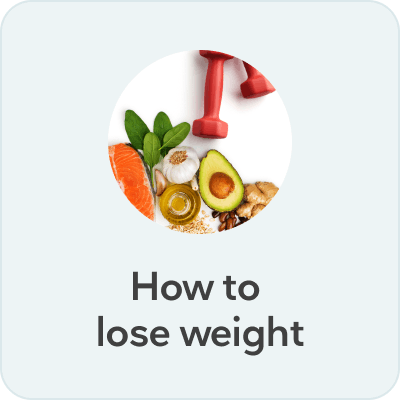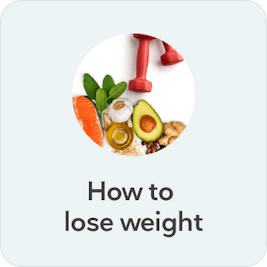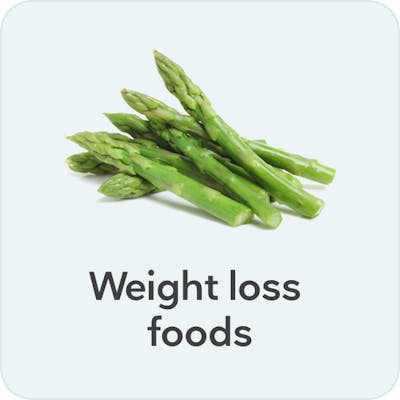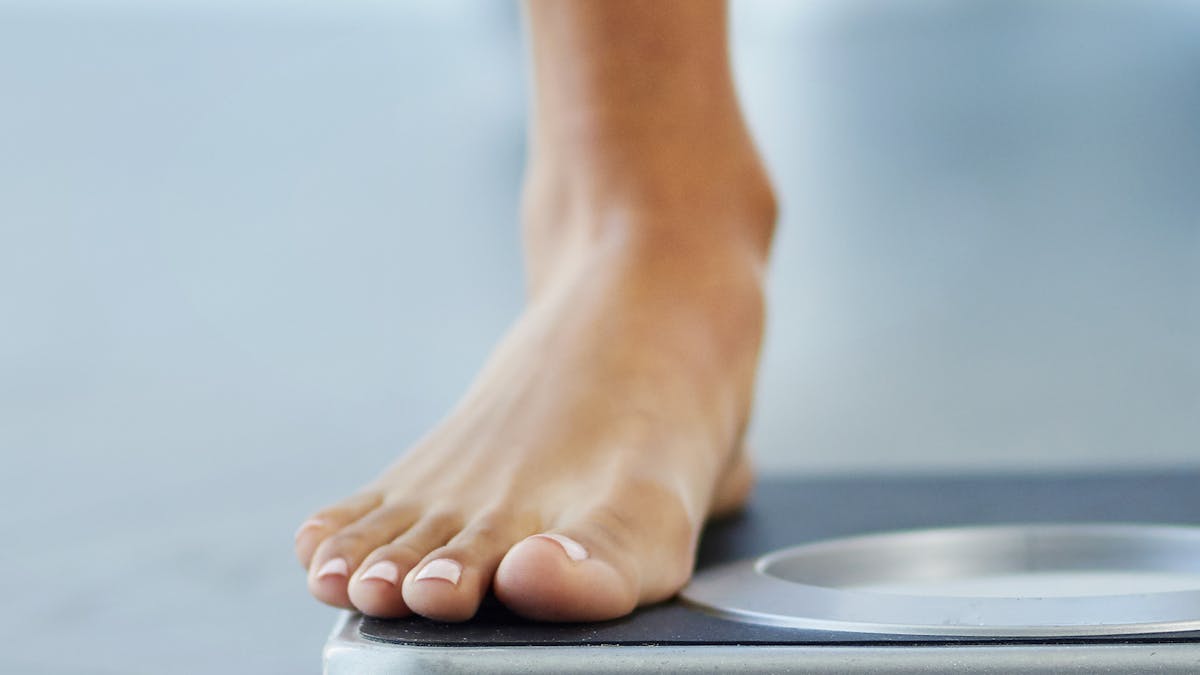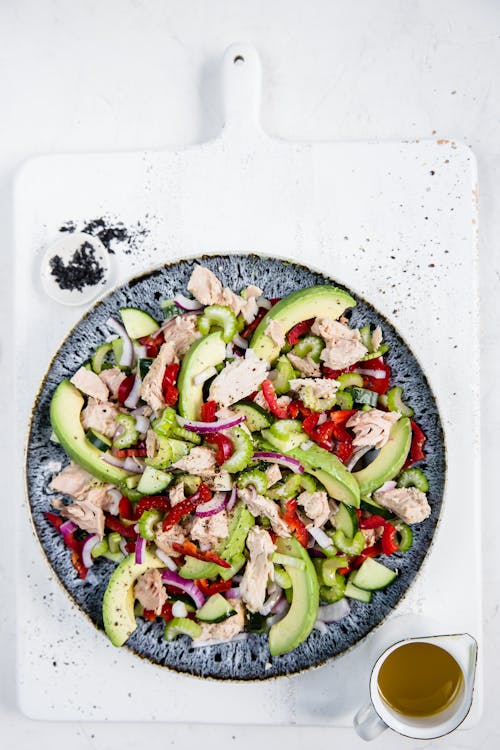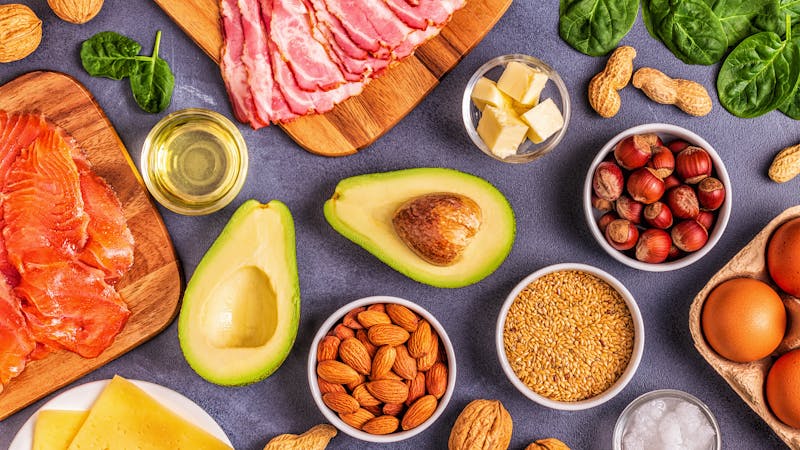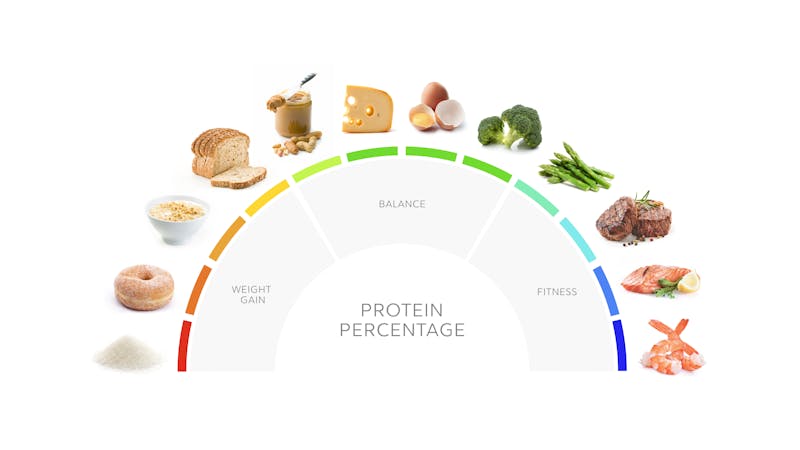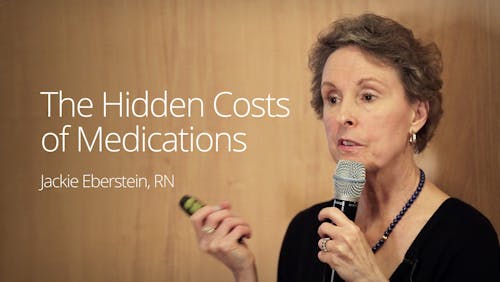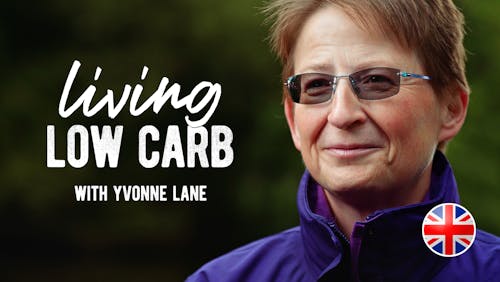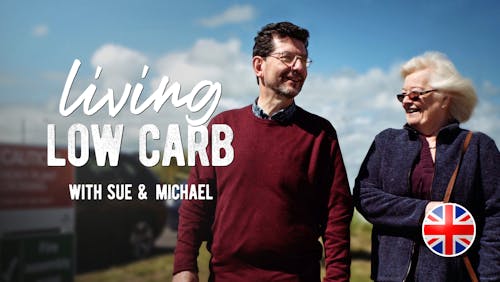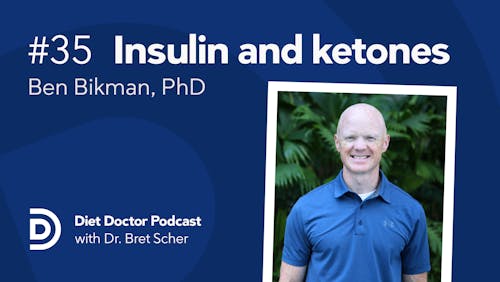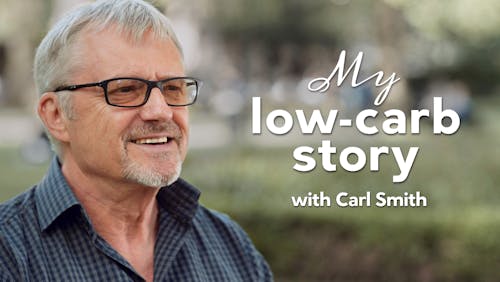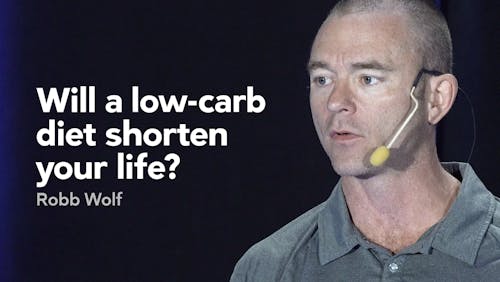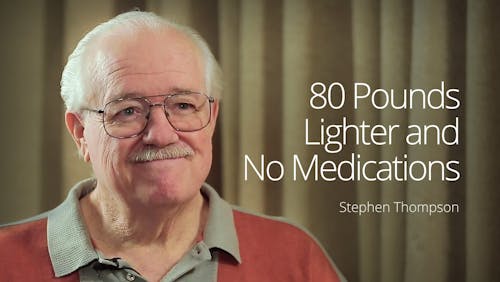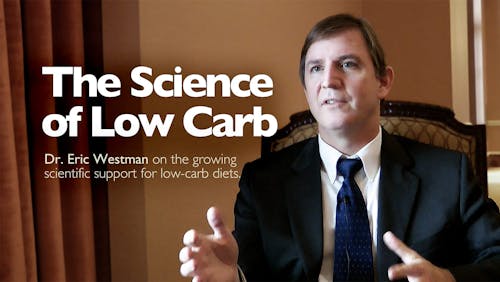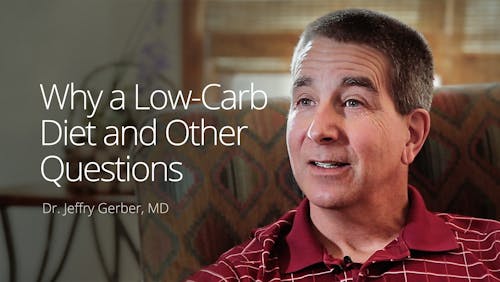Healthy weight loss:
a how-to guide




Everyone knows that to lose weight, you’re supposed to eat fewer calories and burn more. The problem is, eating less than you’d like is often easier said than done.
You might be able to deal with hunger for a few weeks or even months, but at some point, hunger wins. And then, the weight tends to come back.
And it doesn’t simply take more willpower to overcome hunger. Many experts compare willpower to a muscle — it is an exhaustible resource.1 Perhaps that is why diets that rely on willpower don’t work well long term.
What’s the best way to achieve weight loss in a healthy, sustainable way, without hunger or “white-knuckle” willpower?
The approaches that work tend to follow the same basic principles: eat the lowest calorie foods that fill you up, eliminate high-processed foods that don’t, and make sure you get essential nutrition.
It sounds easy. But why do so many of us struggle with healthy weight loss?
This guide will tell you the best ways to achieve healthy weight loss. It has our top weight loss tips, what to eat and what to avoid, the common mistakes you might be making, how to eat fewer calories, and much more.
But first, what is “healthy weight loss?”
Healthy weight loss starts with setting realistic goals. After that, we define healthy weight loss as mainly losing fat mass instead of lean body mass, improving your metabolic health, having a minimal decline in your resting metabolic rate, and making sure you can maintain your dietary lifestyle long-term.
If you’re struggling with your weight, it may not be your fault. The industrial food environment is stacked against you. The good news is that there are effective approaches to reach your best weight and improve your metabolic health long term! Here’s how.
Key takeaways
Best foods for weight loss: Eat high protein foods with the most nutrition per calorie like meats, eggs, and non-starchy vegetables. Learn moreReduce your calorie intake without added hunger: Eating more protein minimizes the feelings of deprivation and hunger. Learn more
Improve metabolic health: Limit carbs, alcohol, and stress. Get more protein, sleep, and exercise. Learn more
Top 10 weight loss tips
- Avoid eating carbs and fat together. This combination provides excessive calories with little to no nutritional value — think pizza, cookies, chips, donuts, etc. — and may increase cravings.
- Eat at least 30 grams of protein at most meals. Protein foods are the most satiating and nutrient-dense type of food.
- On a low carb approach, which is often a successful weight loss strategy, limit net carbs to less than 100 grams (or keep them as low as 20 grams per day, if you want to try a keto diet).
- Fill your plate with fibrous veggies. These provide abundant nutrients, high food volume, and relatively few calories.
- Add enough fat for taste and to enjoy your food, but not more than you need. Let’s be honest, fat tastes great! Taste is an essential part of long-term nutritional success. But too much fat can add calories you don’t need.
- If you’re hungry, start with adding more protein and vegetables. Again, these are the most satiating and nutritious food for the fewest calories.
- Find foods you enjoy that fit the above criteria. Check out our recipes here.
- Stay physically active. You don’t have to run marathons, but physical activity added to a healthy diet can help maintain fat loss while preserving muscle mass.
- Get adequate restorative sleep. Sleep like your health depends on it, because it does!
- Create an environment to promote your success. It isn’t just about knowing what to do. It’s also about creating the environment that will help you succeed. For example, removing tempting foods from your kitchen is just one great way to get started.
What foods to eat and what foods to avoid for healthy weight loss
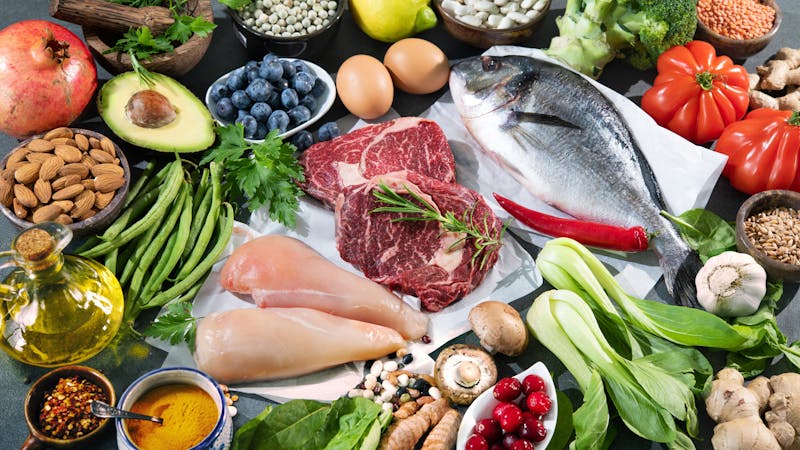



For healthy weight loss, you want to make every calorie count.
But that doesn’t mean you have to count calories.
How is that possible? By focusing on the foods in the list below, you’ll ensure you are getting adequate nutrition, eating filling foods, and naturally decreasing your caloric intake.
We recommend focusing the bulk of your nutrition on “foods with the most nutrition per calorie”, consider portion control of foods with “moderate nutrition”, and reduce or eliminate foods with the least nutrition per calorie. Give it a try!
Foods with the most nutrition per calorie:
- Meat and poultry
- Seafood
- Non-starchy vegetables
- Eggs
- Dairy products like yogurt and cottage cheese
- Soy, beans, and lentils
Foods with moderate nutrition per calorie:
- Cheese
- Nuts and seeds
- Fatty processed meats like bacon
- Starchy vegetables
- Low-sugar fruits like berries, olives, and avocados
- Whole grains
Foods with the least nutrition per calorie
- Combined high-carb and high-fat foods
- Foods with high amounts of sugar and refined starches
- Sugar-sweetened beverages and fruit juice
- Beer and sweetened alcoholic beverages
- Pure added fats like oil and butter
Are you still hungry between meals, or are you looking for ways to add more protein to your diet? Take a look at our guide on high-protein snacks for weight loss. You can choose from hard-boiled eggs, a can of tuna, beef jerky, lupini beans, black soybeans, and more.
Why we recommend high protein for weight loss
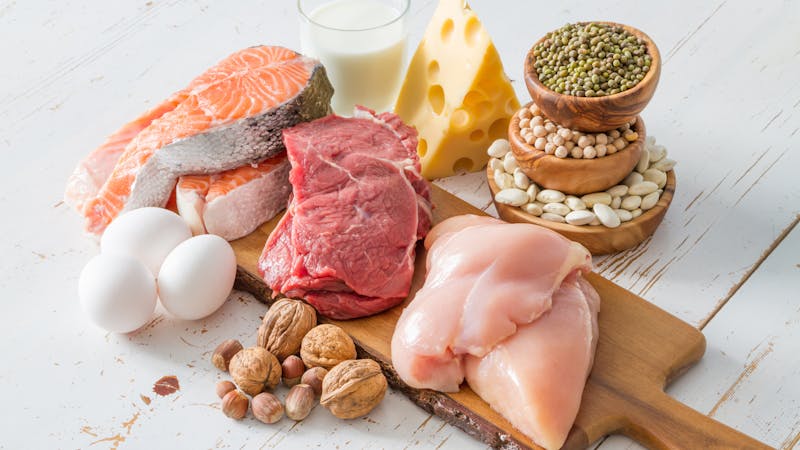



Refined carbohydrates (sugar, bread, pasta, etc.) and refined fats (mostly oils) are high in energy density but lack nutritional value and are easier to overeat.
That’s why, for high nutrition eating, we recommend:
- Reduce your carbohydrate intake.
- Prioritize your protein and fibrous vegetables intake.
- Add just enough fat for taste and, if needed, extra calories.
How to get all essential nutrients
When we say “essential nutrients,” we mean protein, essential fatty acids, vitamins, and minerals. You’ll want to maximize these for each calorie you eat. We also encourage eating plenty of fiber as it may support weight loss and improve health outcomes.2
Fortunately, when you focus on whole-food proteins, the fatty acids and micronutrients are naturally present. And when you eat above-ground veggies, you automatically get fiber and additional micronutrients.
But, what does “eating more” protein mean? How much should you eat? The average American male eats 88 grams of protein per day, with women averaging 66 grams. Those totals equate to only 14 to 16% of total calories.3
While that meets the minimum recommended daily allowance (RDA) definition, it falls short of the what may be better for boosting weight loss, metabolic health, and functional strength.4
The US Institute of Medicine sets 10% to 35% as the acceptable range for protein intake. However, the low end of that range may contribute to overeating and exceeding the range may still be healthy.5
That’s why we recommend at least 1.2 grams per kilo per day and up to 2 grams per kilo per day (0.5 to 0.9 grams per pound), which usually equates to 20 to 35% of total calories.6
Based on calculations of the liver and kidney’s ability to safely handle protein, a 176-pound (80-kilo) person can theoretically consume a maximum of 365 grams of protein per day safely.7 That’s 73% of a 2,000 calorie diet! It’s safe to say that most people won’t have to worry about eating too much protein.
Why we recommend low carb for weight loss
In addition to increasing protein, you can also improve your weight loss by lowering carbohydrate intake.8
Studies show that people following low carb and keto diets consistently have better weight loss and blood sugar control than those following low-fat or other control diets.9
Low carb and keto diets also allow for adequate protein intake, plenty of above-ground fibrous veggies, and added fat for a complete, delicious, and sustainable healthy weight loss plan.
Studies show that keto diets also help reduce hunger. People following low carb diets often naturally reduce their calorie intake, even more than people following calorie-restricted low-fat diets. 10
Reducing carbohydrates also helps lower insulin levels, as does extra weight loss, which may help explain the many metabolic benefits that come from eating low carb.11
One observational study even suggests those with prediabetes who ate a lower carbohydrate diet had a lower risk of premature death. Additionally, a nonrandomized trial reported blood glucose returned to a healthy level in over 50% of participants with prediabetes.12
Based on the above data, plus practical considerations, we think carbohydrate reduction can play an essential role in healthy weight loss.
You can learn more about getting started eating low carb in our guides on a keto diet and a low carb diet for beginners.
Why we recommend intermittent fasting for weight loss
Intermittent fasting is an intentional avoidance of caloric intake for a set period. It can be as short as 12 hours (also called time-restricted eating) or as long as five or more days.
Studies show that short-term intermittent fasting (36 hours or less) can be a healthy and sustainable way to reduce caloric intake while improving weight loss and metabolic health.13
However, not all studies agree, which suggests you need to consider more than simply the timing of your meals. For instance, in one study by Dr. Ethan Weiss from the University Of California at San Francisco (UCSF), time restricted-eating with 16 hours of fasting per day did not improve weight loss or metabolic health.14
One reason that improved results were not seen in the time-restricted eating group may be that subjects ended up eating more calories during their eating window.
Fasting is not an excuse to binge eat or “make up for lost calories.”
Instead, fasting is meant to purposefully reduce caloric intake to preserve resting metabolic rate (the amount of energy you burn at rest), maintain lean muscle mass, and improve metabolic health.15 In other words, intermittent fasting doesn’t just help with weight loss, but with healthy weight loss.
You can learn more about intermittent fasting in our intermittent fasting for beginners guide.
What other diets work for weight loss?
High-protein, low carb diets, which might also include short-term intermittent fasting, may be the best choice for many people to succeed with healthy weight loss.
However, these aren’t the only choices. The scientific literature is full of studies of variable quality demonstrating healthy weight loss with Mediterranean, vegetarian, vegan, and other diets.16
Which diet is right for you? Only you can answer this question. The key is to find a pattern of eating that:
- Focuses on foods you like to eat
- Feels sustainable and enjoyable
- Helps you reduce your caloric intake
- Prevents excessive hunger
- Provides adequate nutrition
You may want to experiment with different diets to find the right one for you. And remember that it’s OK to change up your dietary approach as you age — and as your health, eating preferences, and lifestyle change.
How to eat fewer calories
We don’t blame you if you cringe when you hear “eat fewer calories.” The old message of “eat less, move more” has failed the majority of dieters for decades.17
That’s not what we are promoting.
Instead, we promote eating better. That means eating in a way that naturally allows you to reduce your calories without hunger. Does it sound too good to be true?
It doesn’t have to be.
Studies consistently show that eating more protein leads to decreased hunger.1819 For instance, those who started with eggs for breakfast — as opposed to a bagel — had less hunger and ate fewer calories the rest of the day.20
Other studies show that over time, following a higher protein diet leads to less hunger than a lower protein diet. Part of this may be due to changes in hunger hormones.21 Another possibility is that we are hardwired to eat until we get adequate nutrition, the so-called “protein leverage hypothesis.”22
This hypothesis suggests that we evolved to seek out the nutrition our bodies need. And the sooner we meet that target, the sooner our bodies shut down feelings of hunger or food cravings. If we don’t eat enough protein, our bodies will tell us to keep eating.23Low carb diets, keto diets, and intermittent fasting are other ways to naturally and sustainably reduce caloric intake.24
But healthy weight loss isn’t just about what you eat. It’s also about what you don’t eat. Food affects our biology and our brain. Foods like refined carbohydrates can cause increased fluctuations in our blood glucose, which can lead to increased hunger and subsequent excess caloric intake.25
“Everything in moderation” is destined to result in weight gain for many people if “everything” includes cookies, chips, and soda.26 It can also result in weight gain if it includes pasta, bread, and lots of fruit; or even oils, butter, cheese, or nuts.27
These are all hyperpalatable foods that can make it difficult to control the amount you eat.28 Overeating may have nothing to do with willpower or “being strong.” Instead, your brain may be telling you: This tastes great and has lots of calories for survival, I want more!
Foods that are high in calories and low in nutrition percentage are everywhere, and they are far too easy to overeat.29
How to achieve metabolic health




What do we mean by metabolic health? The simple answer focuses on avoiding metabolic syndrome — abdominal obesity, high blood pressure, abnormal blood glucose, elevated triglycerides, and low high-density lipoprotein (HDL) cholesterol.30
However, you shouldn’t define health as merely avoiding disease. While that may be a great starting point, you don’t have to stop there!
Take waist circumference, for example. If you go by the definition used for metabolic syndrome, a normal waist circumference for a male is 39 inches (99 cm). Does that mean 39 inches is your end goal?
Maybe not! A waist size of 35 inches (88 cm) is likely much healthier for a 5’ 8” male than 39 inches.31 Even though this may be your “end goal,” don’t expect to get there overnight. Continue to strive for slow and steady improvements over time, heading toward a more desirable result.
Just because medicine defines certain metrics as “normal” doesn’t mean they are your goal. Instead, focus on the lifestyles that get to the root cause of metabolic disease.
How can you achieve the goal of metabolic health? Here are our top eight tips.
8 tips to improve metabolic health
- Limit carbs — especially refined starches and sugars. Refined starches and sugars are the foods most likely to cause you to overeat calories and raise your blood sugar, insulin, blood pressure, and triglycerides.32 A low carb approach may be the most effective diet for improving metabolic syndrome.33 Low carb diets also successfully reduce hunger for most people.34
- Eat adequate protein. Numerous studies demonstrate that, despite a slight temporary increase in insulin, higher protein diets improve insulin sensitivity over the long run and contribute to metabolic health.35
- Moderate your fat intake. Excessive fat intake can raise triglycerides and worsen insulin resistance, especially if fat is combined with carbs or contributes to eating too many calories overall.36 Eat enough fat to enjoy your meals, and eat fat that naturally comes with your food, such as the skin on your chicken or a naturally fatty rib eye. But don’t go out of your way to add unneeded fat to your foods.
- Don’t smoke. This should go without saying due to the strong connection of smoking to cancer and heart disease risk, but it also contributes to metabolic disease.37
- Drink minimal to moderate amounts of alcohol. Alcohol provides empty calories that can affect liver health and undermine metabolic health.38
- Manage stress and sleep well. Poorly controlled chronic stress and poor sleep can increase the likelihood of insulin resistance.39
- Get regular physical activity. Muscles burn glucose. Building and using your muscles help promote insulin sensitivity and efficient energy utilization.40
- Practice time-restricted eating or intermittent fasting.41 Giving your body time without ingesting nutrients allows your insulin levels to decrease, improves insulin sensitivity, allows your body to learn to efficiently use fat for energy, and may even tap into autophagy.42 The net result is improved metabolic health.
How to measure weight loss




Your day-to-day weight can vary by several pounds with changes in water weight, or with building new muscle. That means you can lose three pounds of fat without seeing a change on the scale!43
The scale may tell you if your weight is going up or down. But healthy weight loss involves much more than the number on the scale.
Consider trying any of these three techniques in addition to using the scale:
- Follow your waist measurement and your waist-to-height ratio. All you need is a tape measure. If your weight is the same on the scale, but your waist is getting smaller, that is still a fantastic healthy fat loss victory! As we detail in our guide on losing belly fat, waist circumference is one of the best measurements to predict metabolic health and track healthy weight loss.44
- How do your clothes fit? If you don’t have a tape measure, all you have to do is put on your (non-stretchy) pants. It doesn’t get much easier than that. Are your pants looser? That means your waist is getting smaller. If you are doing resistance training, you might also find that your arms and legs look more toned. That is a good sign that you are building muscle mass.
- Test your body composition. This requires additional tools — either a bioimpedance scale or a more detailed assessment with a DEXA scan or equivalent measuring device. A DEXA scan will not only tell you if your weight is changing, but it will also quantify how much weight loss was fat mass, lean body mass, and visceral fat. As a bonus, you also can follow your bone density to ensure maintaining strong bones is part of your healthy weight loss progress.
How to break weight loss plateaus




But it helps to have a plan for when the plateaus come. Here are the eight best tips for helping you to overcome a plateau and get back on track with healthy weight loss.
Top 8 tips for breaking a weight loss plateau45
- Are you eating enough protein? Take a couple of days to measure all of the protein you eat and count every gram. Yes, it can be a hassle, but it can also be illuminating. You may think you are eating “plenty of protein,” only to find out you’re actually getting just 15% of your calories from protein. If that’s the case, the best tip for breaking your stall is to increase your protein intake.
- Are you eating enough fibrous vegetables? Fibrous vegetables are one of the best ways to increase nutrients for the minimum number of calories, increase stomach fullness, and slow gastric emptying.46 Again, keeping track of your intake for a couple of days can help guide you in increasing your consumption of fiber-filled veggies. Aim for at least four cups per day.
- Are you limiting your non-nutrient calories? After increasing your protein and fiber-filled vegetables, what’s left? It’s usually non-nutrient calories — the extra dose of cream or butter, the rice that “comes with” your meal, the sugary salad dressing that seems so innocent. Or maybe it’s the ritual glass of wine with dinner. Experiencing a plateau is the perfect time to take stock of your non-nutrient calories and cut them in half or cut them out completely if you can.
- Are you struggling with cravings or snacking? Usually, addressing protein and fibrous vegetables can help cut down on snacking and cravings. However, if you still find yourself snacking, first make sure you are eating high-protein snacks. Next, make sure you’re snacking for real hunger and not boredom or routine. Finally, try eliminating non-nutritive sweeteners that can stimulate cravings, such as erythritol, stevia, and other sweet additives.47
- How are you sleeping? Plateaus aren’t always about what you eat. Not only can poor sleep negatively affect your food choices during the day, but lack of sleep can also change your hormonal environment, making it nearly impossible to lose weight.48Make sure you prioritize good sleep hygiene. It’s easy to talk about but harder to do. Eliminate screens an hour before bed. Keep a steady sleep-wake routine. Make sure your bedroom is cool, dark, and quiet. Kick the kids and dogs out of your bed. You can keep your spouse, but only if their snoring doesn’t keep you up!
- Are you exercising? Exercise by itself is not great for weight loss. However, regular physical activity can help maintain weight loss and break plateaus when combined with healthy eating. Just make sure your exercise helps build muscle and doesn’t leave you hungry and craving food. For instance, you may find 20 minutes of resistance training more effective than 45 minutes on a treadmill.
- Have you tried time-restricted eating or intermittent fasting? For some, spacing out the timing between meals can naturally reduce caloric intake and allow for lower insulin levels. The combination may be enough to break a weight loss plateau.
- Are you fasting too much? Just because a little fasting can help with weight loss doesn’t mean more is always better, and it doesn’t mean fasting is always a good thing. Some people react to fasting by feeling the need to binge or over-consume calories to “make up” for lost meals. People may even rationally know they shouldn’t react that way, but the pull is too strong to resist.
If this sounds familiar, then intermittent fasting may be doing you more harm than good. Going back to a regular eating schedule may allow you to control your portion sizes better and break your weight loss plateau.
Read even more in our detailed guide on tips to break a weight loss stall.
Maintaining weight loss long term
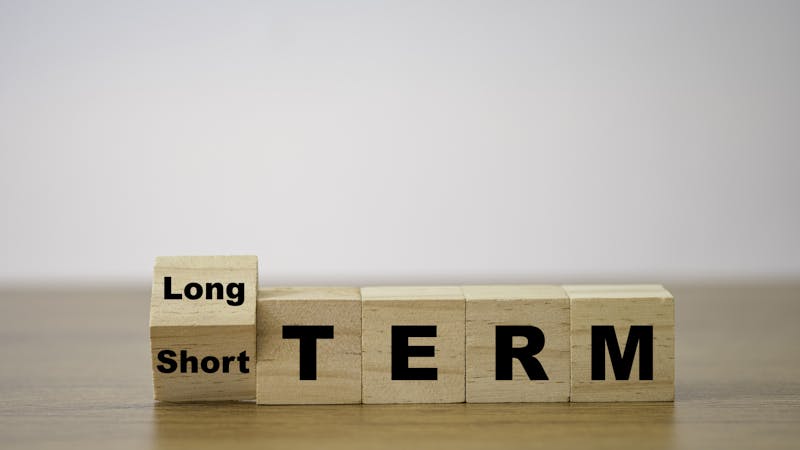



Authors have written hundreds of books on tips to maintain beneficial behavior change, and most of the tips aren’t a secret. The problem is when the recommendations become more items on your “to-do” list, adding chores to your routine that take time and energy you don’t have to give.
If that’s the case, don’t let yourself get overwhelmed. Pick one or two tips that resonate most with you, and stop there. Just because a tip made the list doesn’t mean you have to do it. The list is merely a collection of suggestions to try and see what works best for you.
Top tips for long-term success
- Connect with your why, to keep your motivation for maintaining your weight loss front and center.
- Create accountability with a partner, a coach, an app, or a calendar.
- Control your environment. Don’t allow temptations in your house or workplace.
- See your new way of eating as a lifestyle, not a diet. It isn’t something you “do.” It’s something you “are.” The language you use can make all the difference.
- Keep it enjoyable. Find recipes you love that fit within your eating pattern.
- Celebrate small successes on your way to bigger successes.
- Realize that you won’t be perfect, and that’s OK. Minor detours don’t have to derail you. Anticipate roadblocks and have a plan to get past them.
- Incorporate smart strategies for optimizing your sleep, stress management, and physical activity. Better habits in these areas can help with long-term, healthy weight maintenance.
Weight loss is a common goal for millions of people. But not all weight loss is the same. You don’t just want to lose weight. You want to lose weight in a healthy way. Healthy weight loss means improving your metabolic health, losing mostly fat mass and minimal — if any — lean muscle mass, protecting your resting metabolic rate, and enjoying the process as you go. By eating plenty of protein and fibrous veggies, reducing your carbohydrates, and eating just enough fat to enjoy your food, you will be well on your way to success. Improving other lifestyle behaviors having to do with sleep, stress management, and physical activity, and using appropriate intermittent fasting can also help you along your healthy weight loss journey. Sample meals and meal plans
Explore our high-protein weight loss recipes:Conclusion
Weight loss
Healthy weight loss: a how-to guide - the evidence
This guide is written by Dr. Bret Scher, MD and was last updated on October 17, 2022. It was medically reviewed by Dr. Michael Mindrum, MD on April 20, 2021.
The guide contains scientific references. You can find these in the notes throughout the text, and click the links to read the peer-reviewed scientific papers. When appropriate we include a grading of the strength of the evidence, with a link to our policy on this. Our evidence-based guides are updated at least once per year to reflect and reference the latest science on the topic.
All our evidence-based health guides are written or reviewed by medical doctors who are experts on the topic. To stay unbiased we show no ads, sell no physical products, and take no money from the industry. We're fully funded by the people, via an optional membership. Most information at Diet Doctor is free forever.
Read more about our policies and work with evidence-based guides, nutritional controversies, our editorial team, and our medical review board.
Should you find any inaccuracy in this guide, please email andreas@dietdoctor.com.
Psychology Bulletin 2000:
Self-regulation and depletion of limited resources: does self-control resemble a muscle?[overview article; ungraded]Current Directions in Psychological Science 2007: The Strength Model of Self-Control[overview article; ungraded]
↩American Journal of Clinical Nutrition 2018:
Dietary fiber and health outcomes: an umbrella review of systematic reviews and meta-analyses[review of observational studies; weak evidence]Journal of Nutrition 2019: Fiber Intake Predicts Weight Loss and Dietary Adherence in Adults Consuming Calorie-Restricted Diets: The POUNDS Lost (Preventing Overweight Using Novel Dietary Strategies) Study[retrospective review of RCT data; weak evidence]
↩American Journal of Clinical Nutrition 2018: Protein intake trends and conformity with the Dietary Reference Intakes in the United States: analysis of the National Health and Nutrition Examination Survey, 2001-2014
[observational study, weak evidence]American Journal of Clinical Nutrition 2008: Current protein intake in America: analysis of the National Health and Nutrition Examination Survey, 2003-2004
↩
[observational study, weak evidence]The following is a summary article about protein needs exceeding the RDA minimum.
Advances in Nutrition 2017: Optimizing Protein Intake in Adults: Interpretation and Application of the Recommended Dietary Allowance Compared with the Acceptable Macronutrient Distribution Range
[overview article; ungraded] ↩Institute of Medicine of the National Academies 2005: Dietary Reference Intakes for energy, carbohydrate, fiber, fat, fatty acids, cholesterol, protein, and amino acids[overview article; ungraded]
Journal of the American Dietetic Association 2002: Dietary reference intakes for energy, carbohydrate, fiber, fat, fatty acids, cholesterol, protein and amino acids
[overview article; ungraded]Controversy exists about how they derived the upper number, as it is based on nitrogen balance and not clinical outcomes. Because this threshold is a theoretical deduction, it could be even higher.
Journal of Nutrition 2003: Amino acid pharmacokinetics and safety assessment
↩
[overview article; ungraded]Although using percentage is a convenient way to discuss the amount of protein, the absolute amount will vary based on the total calories eaten. ↩
International Journal of Sports Nutrition and Exercise Metabolism 2006: A review of issues of dietary protein intake in humans
[overview article; ungraded] ↩Several meta-analyses of randomized controlled trials (RCTs), considered the strongest, most robust type of evidence, have come to the same conclusion: low carb diets tend to outperform other diets for weight loss for up to two years.
Two examples show greater weight loss on low carb diets compared to low-fat diets in studies that were from eight weeks to 24 months in length:
PLoS One 2015: Dietary intervention for overweight and obese adults: Comparison of low-carbohydrate and low-fat diets. A meta-analysis [strong evidence] Learn more
The British Journal of Nutrition 2016: Effects of low-carbohydrate diets v. low-fat diets on body weight and cardiovascular risk factors: a meta-analysis of randomised controlled trials [strong evidence] Learn more ↩
The definition of low carb is inconsistent in the scientific literature. However, when defining low carb as less than 130 grams of carbs per day and keto as less than 30 grams of total carbs per day, studies consistently demonstrate low- carb diets are superior for weight loss and metabolic health.
Journal of the American College of Nutrition 2013: Improvements in glucose metabolism and insulin sensitivity with a low-carbohydrate diet in obese patients with type 2 diabetes [uncontrolled study; weak evidence]
JCI Insight 2019: Dietary carbohydrate restriction improves metabolic syndrome independent of weight loss [randomized trial; moderate evidence]
Obesity 2015: Weight loss on low-fat vs. low carb diets by insulin resistance status among overweight adults & adults with obesity: A randomized pilot trial [moderate evidence]
In one study, low carb dieters lost 22.8% of their abdominal fat, compared to only 1% for the low-fat dieters, again with greater overall weight loss.
Nutrition and Metabolism (London) 2020: Effects of weight loss during a very low carbohydrate diet on specific adipose tissue depots and insulin sensitivity in older adults with obesity: a randomized clinical trial [randomized trial; moderate evidence]
↩Obesity Reviews 2014: Do ketogenic diets really suppress appetite? A systematic review and meta-analysis [strong evidence]
Obesity 2007: The effects of a low-carbohydrate ketogenic diet and a low-fat diet on mood, hunger, and other self-reported symptoms [moderate evidence]
↩Journal of the American College of Nutrition 2013: Improvements in glucose metabolism and insulin sensitivity with a low-carbohydrate diet in obese patients with type 2 diabetes [uncontrolled study; weak evidence]
JCI Insight 2019: Dietary Carbohydrate Restriction Improves Metabolic Syndrome Independent of Weight Loss [randomized trial; moderate evidence]
Obesity 2015: Weight loss on low-fat vs. low carb diets by insulin resistance status among overweight adults & adults with obesity: A randomized pilot trial [moderate evidence]
↩Clinical Nutrition 2020:
Associations of low-carbohydrate and low-fat intakes with all-cause mortality in subjects with prediabetes with and without insulin resistance [observational study, weak evidence]Nutrients 2021: Type 2 Diabetes Prevention Focused on Normalization of Glycemia: A Two-Year Pilot Study [nonrandomized study, weak evidence]
↩Many studies on intermittent fasting and weight loss investigated restricting calories to very low levels for a limited time, such as one or more days per week (e.g. 500 calories per day). Actual fasting means restricting calories to nearly zero for a time, which may or may not be more effective.
JBI Database of Systematic Reviews and Implementation Reports 2018: Intermittent fasting interventions for treatment of overweight and obesity in adults: a systematic review and meta-analysis [strong evidence]
Obesity Reviews 2017: Short‐term intermittent energy restriction interventions for weight management: a systematic review and meta‐analysis [strong evidence]
Obesity (Silver Spring) 2016: A randomized pilot study comparing zero-calorie alternate-day fasting to daily caloric restriction in adults with obesity [moderate evidence]
The American Journal of Clinical Nutrition 2015: Health effects of intermittent fasting: hormesis or harm? A systematic review [moderate evidence]
The following studies investigated intermittent fasting and type 2 diabetes:
JAMA Network Open 2018: Effect of intermittent compared with continuous energy restricted diet on glycemic control in patients with type 2 diabetes: a randomized noninferiority trial [moderate evidence]
Diabetes Research and Clinical Practice 2016: The effects of intermittent compared to continuous energy restriction on glycaemic control in type 2 diabetes; a pragmatic pilot trial [moderate evidence]
BMJ Case Reports 2018: Therapeutic use of intermittent fasting for people with type 2 diabetes as an alternative to insulin [case reports, very weak evidence]
↩We wrote about this study questioning how it applies to those who properly use short fasts, reducing daily caloric intake, and focusing on low carb foods to preserve lower insulin and glucose levels.
JAMA Internal Medicine 2020: Effects of time-restricted eating on weight loss and other metabolic parameters in women and men with overweight and obesity [randomized trial; moderate evidence] ↩
The following studies show reduced insulin levels with intermittent fasting, as well as improved fat mass loss. While this does not prove cause and effect, it demonstrates a plausible mechanism. Further studies are required for definitive cause and effect proof.
International Journal of Obesity 2011: The effects of intermittent or continuous energy restriction on weight loss and metabolic disease risk markers: a randomised trial in young overweight women [moderate evidence]
The following study is a systematic review of four randomized controlled trials (RCTs) that were selected using the GRADE system to pick the highest-quality evidence available.
Cureus 2018: Intermittent fasting: the choice for a healthier lifestyle [systematic review of randomized trials; strong evidence]
The following study showed similar timing of insulin secretion with short-term fasting but at much lower amplitude, therefore making the overall insulin levels persistently higher for the cohort eating regularly timed meals.
Diabetes 2002: Effects of fasting on physiologically pulsatile insulin release in healthy humans
[nonrandomized study, weak evidence] ↩The following review of RCTs reported 4.4 pounds (2 kilos) more weight loss with vegetarian diets compared to controls.
Journal of General Internal Medicine 2016: Vegetarian Diets and Weight Reduction: a Meta-Analysis of Randomized Controlled Trials
[systematic review of randomized trials; strong evidence]And the following RCT reports improved weight loss and insulin sensitivity in those following a low-fat vegan diet.
JAMA Network Open 2020: Effect of a Low-Fat Vegan Diet on Body Weight, Insulin Sensitivity, Postprandial Metabolism, and Intramyocellular and Hepatocellular Lipid Levels in Overweight Adults: A Randomized Clinical Trial
[randomized trial; moderate evidence]The following review of randomized and nonrandomized trials demonstrates improved weight loss from plant-based diets in seven out of 19 studies.
DIabetes Metabolic Syndrome and Obesity 2020: Effects of Plant-Based Diets on Weight Status: A Systematic Review
[non-controlled study; weak evidence]In a review comparing different clinical trials in adults with type 2 diabetes, people who followed a Mediterranean diet for 12 months lost an average of 13.5 pounds (6.2 kilos).
Journal of the Academy of Nutrition and Dietetics 2015: Lifestyle weight-loss intervention outcomes in overweight and obese adults with type 2 diabetes: a systematic review and meta-analysis of randomized clinical trials [strong evidence]
Other studies suggest that Mediterranean diets can help people lose weight and reduce their waist size. In one trial, people who followed a Mediterranean diet lost up to 7.5 pounds (3.4 kilos) and 2.74% of their body fat in four weeks:
Journal of Translational Medicine 2018: Influence of FTO rs9939609 and Mediterranean diet on body composition and weight loss: a randomized clinical trial [randomized trial; moderate evidence]
↩Obesity Reviews 2017: Prevalence of personal weight control attempts in adults: a systematic review and meta‐analysis [systematic review of observational studies; very weak evidence]
Journal of the American Medical Association 2019: Trends in self-perceived weight status, weight loss attempts, and weight loss strategies among adults in the United States, 1999-2016 [observational study; very weak evidence]
The following meta-analysis of RCTs reports only one commercial weight loss program has evidence showing at least a 5% weight loss. The analysis also reports that as many as 67% of participants drop out within the first year.
Annals of Internal Medicine 2005: Systematic review: an evaluation of major commercial weight loss programs in the United States [systematic review of randomized trials; strong evidence] ↩
In a 12-day randomized crossover study, people were allowed to eat as much as they wanted on a high-protein, normal-protein, and a low-protein diet. During the high-protein portion of the trial, they consumed 500 to 550 calories less than they did during the normal-protein and low-protein portion of the trial:
The American Journal of Clinical Nutrition 2013: Protein leverage affects energy intake of high-protein diets in humans [randomized trial; moderate evidence] ↩
A systematic review of randomized controlled trials found that higher-protein diets tend to promote weight loss, due in part to reducing hunger and increasing satiety:
Journal of the American College of Nutrition 2004: The effects of high protein diets on thermogenesis, satiety and weight loss: a critical review [systematic review of randomized trials; strong evidence] ↩
In a crossover trial, overweight women ate a mixed, equivalent-calorie breakfast containing either two eggs or one bagel. In addition to feeling more satisfied after the egg breakfast, the women ate less at lunch and took in an average of 250 fewer calories for 36 hours after the egg breakfast compared to the bagel breakfast:
Journal of the American College of Nutrition 2005: Short-term effect of eggs on satiety in overweight and obese subjects [randomized crossover trial; moderate evidence]
In a similar crossover trial, men consumed fewer calories at lunch after eating an egg-based breakfast compared to a bagel-based breakfast, and averaged 400 fewer calories overall for the next 24 hours — even though both breakfasts had similar calories and macronutrient composition:
Nutrition Research 2010: Consuming eggs for breakfast influences plasma glucose and ghrelin, while reducing energy intake during the next 24 hours in adult men [randomized crossover trial; moderate evidence] ↩
The American Journal of Clinical Nutrition 2013: Contribution of gastroenteropancreatic appetite hormones to protein-induced satiety [randomized crossover trial; moderate evidence]
Nutrition Journal 2014: Effects of high-protein vs. high- fat snacks on appetite control, satiety, and eating initiation in healthy women [randomized trial; moderate evidence]
Advances in Nutrition 2015: Controversies surrounding high-protein diet intake: satiating effect and kidney and bone health [review of observational studies; weak evidence]
Your body also burns more calories digesting protein compared to fat or carbs.
Journal of the American College of Nutrition 2004: The effects of high protein diets on thermogenesis, satiety and weight loss: a critical review [systematic review of randomized trials; strong evidence] ↩
Obesity reviews 2005: Obesity: the protein leverage hypothesis
[overview article; ungraded]PLoS One 2011: Testing protein leverage in lean humans: a randomised controlled experimental study
[randomized trial; moderate evidence] ↩Public Health Nutrition 2018: Ultra-processed foods, protein leverage and energy intake in the USA[observational study; weak evidence] ↩
Obesity Reviews 2014: Do ketogenic diets really suppress appetite? A systematic review and meta-analysis [strong evidence]
JBI Database of Systematic Reviews and Implementation Reports 2018: Intermittent fasting interventions for treatment of overweight and obesity in adults: a systematic review and meta-analysis [strong evidence] ↩
Nature Metabolism 2021:
Postprandial glycaemic dips predict appetite and energy intake in healthy individuals[non-controlled study; weak evidence] ↩PLoS One 2015: Everything in Moderation–Dietary Diversity and Quality, Central Obesity and Risk of Diabetes
[observational study, weak evidence] ↩This is based on the consistent clinical experience of practitioners familiar with low carb nutrition. [weak evidence] ↩
Cell Metabolism 2019: Ultra-Processed Diets Cause Excess Calorie Intake and Weight Gain: An Inpatient Randomized Controlled Trial of Ad Libitum Food Intake
[randomized trial; moderate evidence] ↩Cell Metabolism 2019:Ultra-processed diets cause excess calorie intake and weight gain: An inpatient randomized controlled trial of ad libitum food intake [randomized trial; moderate evidence]
PLoS One 2015: Which foods may be addictive? The roles of processing, fat content, and glycemic load [non-randomized trial; weak evidence] ↩
Circulation 2005: Diagnosis and management of the metabolic syndrome: an American Heart Association/National Heart, Lung, and Blood Institute Scientific Statement
[overview article; ungraded] ↩Circulation 2008: Abdominal obesity and the risk of all-cause, cardiovascular, and cancer mortality: sixteen years of follow-up in US women [observational study, weak evidence]
Annals of Internal Medicine 2015: Normal-Weight Central Obesity: Implications for Total and Cardiovascular Mortality [observational study, weak evidence]
Even “normal weight” people, as defined by BMI, with extra belly fat are at increased risk of health complications.
European Heart Journal 2019: Association between regional body fat and cardiovascular disease risk among postmenopausal women with normal body mass index [observational study, weak evidence]
BMJ Open 2017: Risk for metabolic diseases in normal weight individuals with visceral fat accumulation: a cross-sectional study in Japan [observational study, weak evidence] ↩
Nutrition Reviews 2000: High-glycemic index foods, hunger, and obesity: is there a connection?
[overview article; ungraded]BMJ 2018: Dietary carbohydrates: role of quality and quantity in chronic disease
[overview article; ungraded] ↩Journal of the American College of Nutrition 2013: Improvements in glucose metabolism and insulin sensitivity with a low-carbohydrate diet in obese patients with type 2 diabetes [uncontrolled study; weak evidence]JCI Insight 2019: Dietary Carbohydrate Restriction Improves Metabolic Syndrome Independent of Weight Loss [randomized trial; moderate evidence]
Obesity 2015: Weight loss on low-fat vs. low carb diets by insulin resistance status among overweight adults & adults with obesity: A randomized pilot trial [moderate evidence]
One observational study even suggests improved survival for those with prediabetes who eat a lower carbohydrate diet.Clinical Nutrition 2020:
Associations of low-carbohydrate and low-fat intakes with all-cause mortality in subjects with prediabetes with and without insulin resistance [observational study, weak evidence] ↩Obesity Reviews 2015: Do ketogenic diets really suppress appetite? A systematic review and meta-analysis [strong evidence]European Journal of Clinical Nutrition 2013: Ketosis and appetite-mediating nutrients and hormones after weight loss
<ahref=”https://www.dietdoctor.com/about/policy-for-grading-scientific-evidence”>[non-controlled study; weak evidence] ↩This RCT reports that those following a 27% protein diet compared to 16% had better preservation of lean mass and a better glycemic response despite no difference in weight loss.Nutrients 2018: Effects of Adherence to a Higher Protein Diet on Weight Loss, Markers of Health, and Functional Capacity in Older Women Participating in a Resistance-Based Exercise Program
[randomized trial; moderate evidence]This randomized crossover study reports subjects with type 2 diabetes have a greater reduction in A1c and total daily glucose, fatty liver, and fatty pancreas with a 30% carb/30% protein diet compared to a 50% carb/17% protein diet.Diabetologia 2019:
A carbohydrate-reduced high-protein diet improves HbA 1c and liver fat content in weight stable participants with type 2 diabetes: a randomised controlled trial[randomized trial; moderate evidence]This small RCT reports 100% prediabetes remission with a higher protein diet.Nutrition, Metabolism, and Cardiovascular Diseases 2020: High protein diet leads to prediabetes remission and positive changes in incretins and cardiovascular risk factors
[randomized trial; moderate evidence] ↩Studies such as the following highlight data that excessive fat intake is associated with insulin resistance. However, that has not been studied in the context of a low carb diet.Clinical Nutrition 2004: Dietary fat, insulin sensitivity and the metabolic syndrome [review article; ungraded] ↩
PLoS One 2016: Tobacco use, insulin resistance, and risk of type 2 diabetes: Results from the multi-ethnic study of atherosclerosis [prospective cohort study; weak evidence] ↩
Biomolecules 2015: Impact of Alcohol on Glycemic Control and Insulin Action
[overview article; ungraded] ↩Psychoneuroendocrinology 2005: Role of stress in the pathogenesis of the metabolic syndrome [overview article; ungraded]Journal of Epidemiology 2016: Investigation of the relationship between chronic stress and insulin resistance in a Chinese population [prospective cohort study; weak evidence]Lancet 1999: Impact of sleep debt on metabolic and endocrine function [non-randomized study; weak evidence]Healthcare (Basel) 2019: The interlinked rising epidemic of insufficient sleep and diabetes mellitus [overview article; ungraded]
↩British Medical Journal Open Sport Exercise Medicine 2016: Update on the effects of physical activity on insulin sensitivity in humans [overview article; ungraded] ↩
One study finds that six weeks of alternate-day fasting leads to a 7% overall weight loss with a visceral fat loss of 5.7%.Journal of Diabetes and Metabolic Disorders 2013: The effects of modified alternate-day fasting diet on weight loss and CAD risk factors in overweight and obese women [nonrandomized study, weak evidence]Another randomized trial reports 26.4 pounds (12 kilos) of fat mass loss with intermittent fasting compared to 17.6 pounds (8 kilos) for chronic calorie restriction.International Journal of Obesity (London) 2018: Intermittent energy restriction improves weight loss efficiency in obese men: the MATADOR study [randomized trial; moderate evidence] ↩
The following study shows a significantly smaller amount of insulin secreted during periods of fasting.Diabetes 2002: Effects of fasting on physiologically pulsatile insulin release in healthy humans
[nonrandomized study, weak evidence]The following study shows fasting improved homeostatic model assessment of insulin resistance (HOMA-IR), a measurement of insulin sensitivity.Journal of Clinical Medicine 2019: The Effectiveness of Intermittent Fasting to Reduce Body Mass Index and Glucose Metabolism: A Systematic Review and Meta-Analysis [systematic review of randomized trials; strong evidence]This article reviews the evidence on longevity and autophagy.
Frontiers in Cell and Developmental Biology 2019: Maximizing Longevity and Healthspan: Multiple Approaches All Converging on Autophagy [overview article; ungraded]
↩You can consider comparing numbers over weeks and months rather than days. Another option is to average your weight over the last 5 to 7 days to estimate your present weight so it can be tracked over time. ↩
Research in Sports Medicine 2020: A new waist-to-height ratio predicts abdominal adiposity in adults [nonrandomized study, weak evidence]BMJ Open 2016: Waist-to-height ratio as an indicator of ‘early health risk’: simpler and more predictive than using a ‘matrix’ based on BMI and waist circumference [nonrandomized study, weak evidence] ↩
This is based on the consistent clinical experience of practitioners familiar with behavior modification for healthy weight loss [weak evidence] ↩
Journal of Nutrition and Metabolism 2019: The Role of Fiber in Energy Balance[overview article; ungraded] ↩
In some people, sugar substitutes may partially activate the “food reward” pathway responsible for cravings.The Yale Journal of Biology and Medicine 2010: Gain weight by “going diet?” Artificial sweeteners and the neurobiology of sugar cravings [overview article; ungraded] ↩
Physiology & Behavior 2018: Effect of sleep curtailment on dietary behavior and physical activity: a randomized crossover trial [moderate evidence]Obesity (Silver Spring) 2017: Stress, cortisol, and other appetite-related hormones: Prospective prediction of 6-month changes in food cravings and weight [non-controlled study; weak evidence]Obesity Reviews 2018: Does stress influence sleep patterns, food intake, weight gain, abdominal obesity and weight loss interventions and vice versa? [overview article; ungraded]Journal of the American Medical Directors Association 2014: Postprandial hypotension: a systematic review[overview article; ungraded]European Journal of Clinical Nutrition 2017: The effects of partial sleep deprivation on energy balance: a systematic review and meta-analysis[analysis of randomized and non-randomized studies; weak evidence]
↩



